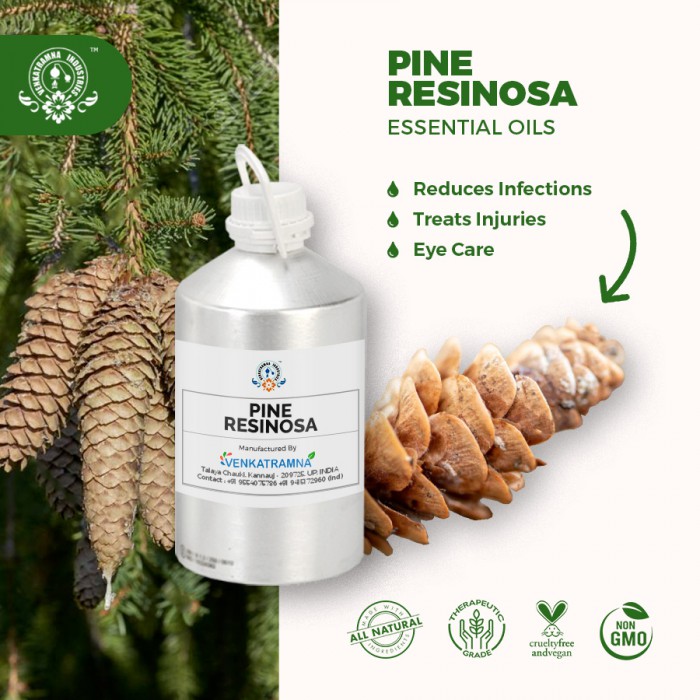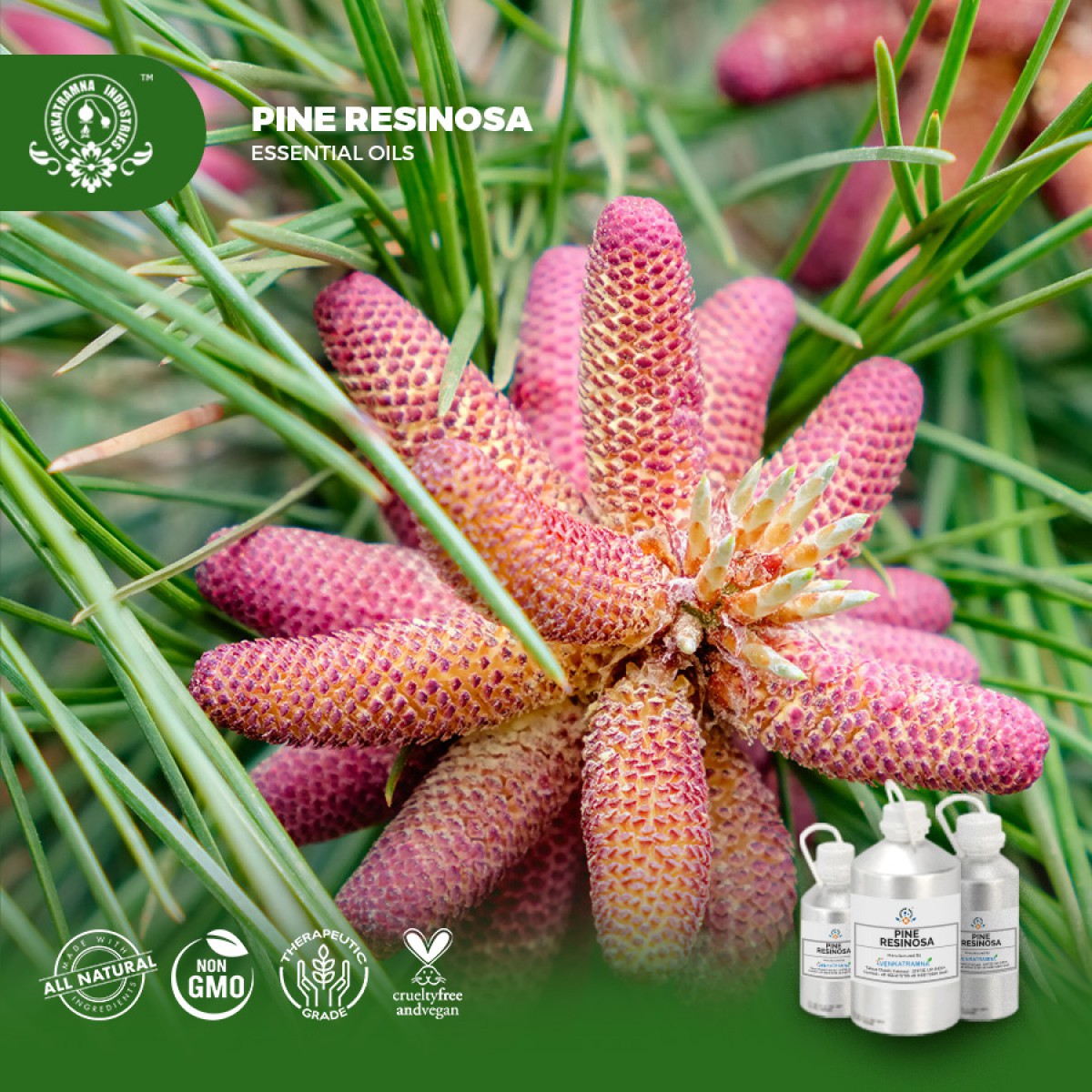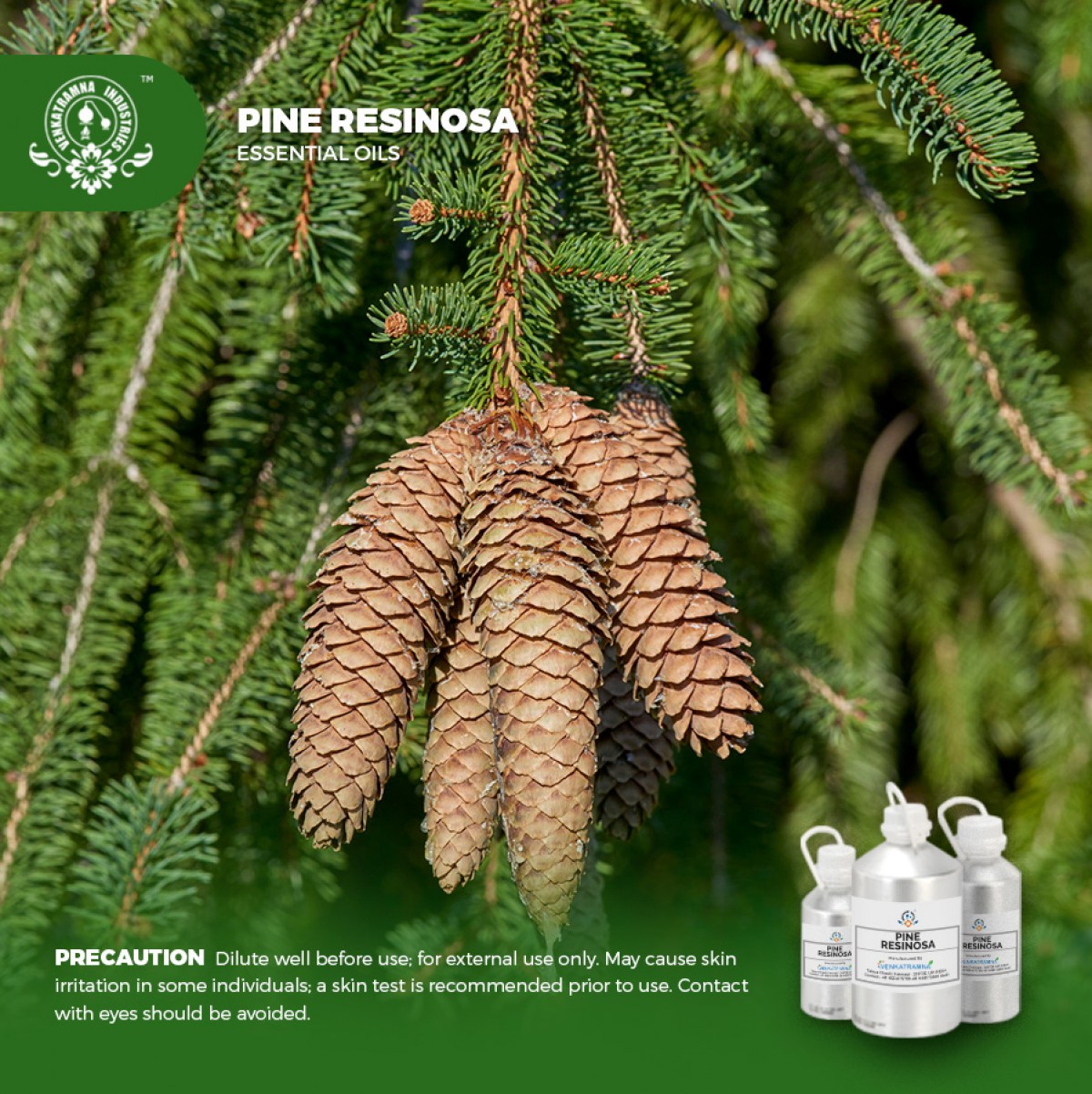Botanical Name: Pinus sylvestris Common name: Pine Plant family Read More
|
Botanical Name: |
Pinus
sylvestris |
|
Common name: |
Pine |
|
Plant
family: |
Pinaceae |
|
Genus: |
Pinus |
|
Appearance/Color: |
Colorless to Pale yellow with thin consistency |
|
Odor: |
Strong
aroma with top note and has fresh forest smell |
|
Blends With: |
Citronella, Clary Sage, Coriander, Cypress, Eucalyptus,
Frankincense, Juniper, Lavender, Myrrh, Rose Mary, Spikenard and Tea Tree |
|
Origin: |
Hungary |
|
Source: |
Needles (Leaves) |
|
Method
of Extraction: |
Steam
Distillation |
Pine
essential oil is obtained from the tree commonly known as pine, with the
scientific name Pinus sylvestris. Before spreading to different parts of
world, this tree is originated in Austria and Russia. It resembles Christmas
tree used all over the world. Due to its wide spread availability pine oil
became an important element in supplemental health. Also, it is very easy to
make pine essential oil, and pine trees grow in huge numbers all over the
world.
Pinus sylvestris is an evergreen coniferous tree which grows 35 m in height and 1 m trunk diameter when mature, exceptionally over 45 meters (148 ft) tall and 1.7 meters (5 ft 7 in) trunk diameter on very productive sites.
DISCLAIMER
The complete range of conditions
or methods of use are beyond our control therefore we do not assume any
responsibility and expressly disclaim any liability for any use of this
product. Information contained herein is believed to be true and accurate however,
all statements or suggestions are made without warranty, expressed or implied,
regarding accuracy of the information, the hazards connected with the use of
the material or the results to be obtained from the use thereof. Compliance
with all applicable federal, state, and local laws and local regulations
remains the responsibility of the user.
The FDA has not evaluated the
statements on this website. No claims are made by Venkatramna Industries as to
the medicinal value of any products from vriaroma.com or by us. The information
presented here is for educating our customers about the traditional uses of
essential oils and is not intended to diagnose, treat, cure, or prevent any
disease. You are responsible for understanding the safe application of these products.
If you have any questions, please call or email us for further information.
As per NAHA guidelines, New Directions Aromatics
(NDA) does not recommend the ingestion of essential oils. It is imperative to
consult a medical practitioner before using Essential Oils for therapeutic
purposes. Pregnant and nursing women and those taking prescription drugs are
especially advised not to use this product without the medical advice of a
physician. The oil should always be stored in an area that is inaccessible to
children, especially those under the age of 7.
Pine essential oil Hungary is believed to
have cleansing, stimulating, uplifting, and invigorating effects. Traditional Pine
Essential Oil is known to soothe inflammation, soreness, aches, pain, and gout,
to stimulate and enhance circulation, to facilitate the healing of scratches,
cuts, wounds, and burns; to promote the regeneration of new skin; to reduce
pain; to relieve muscle fatigue. Pine Essential Oil Hungary is reputed to
soothe itchiness, inflammation, and dryness, control excessive perspiration,
prevent fungal infections, protect minor abrasions from developing infections,
slow the appearance of signs of aging, and enhance circulation.
Pine Essential Oil is used in aromatherapy applications,
positively impacts the mood by clearing the mind of stresses, energizing the
body to help eliminate fatigue, enhancing concentration, and promoting a
positive outlook. It is known to soothe
muscles and joints that may be afflicted with arthritis and rheumatism or other
conditions characterized by inflammation, soreness, aches, and pain. By
stimulating and enhancing circulation, it helps facilitate the healing of
scratches, cuts, wounds, burns, and even scabies, as it promotes the
regeneration of new skin and helps reduce pain. It is also reputed to help
relieve muscle fatigue.
Additionally, its diuretic properties
help promote the body’s detoxification by encouraging the expulsion of
pollutants and contaminants, such as excess water, urate crystals, salts, and
fats. This helps maintain the health and function of the urinary tract and the
kidneys. This effect also helps regulate body weight.
Its
antioxidant properties make Pine Oil ideal for use in natural formulations
intended to slow the appearance of signs of aging, including fine lines,
wrinkles, sagging skin, and age spots. Furthermore, its circulation-stimulating
property promotes a warming effect.
It
is used in cosmetics preparations, the antiseptic and antimicrobial properties
of Pine Essential Oil are known to help soothe skin conditions characterized by
itchiness, inflammation, and dryness, such as acne, eczema, and psoriasis.
These properties combined with its ability to help control excessive
perspiration, may help prevent fungal infections, such as Athlete’s Foot. It is
also known to effectively protect minor abrasions, such as cuts, scrapes, and
bites, from developing infections.
When
applied to the hair, Pine Essential Oil is reputed to exhibit an antimicrobial
property that cleanses to remove bacteria as well as a build-up of excess oil,
dead skin, and dirt. This helps prevent inflammation, itchiness, and infection,
which in turn enhances the hair’s natural smoothness and shine. It contributes
moisture to eliminate and protect against dandruff, and it nourishes to
maintain the health of the scalp and strands. Pine Essential Oil is also one of
the oils known to protect against lice.
COMMON
USAGE
·
Cures
Respiratory Problems
·
Treats
Injuries
·
Reduces
Infections
·
Eye
Care
·
Relieves
Stress
·
Relieves
Pain
·
Boosts
Metabolism
·
Cosmetic
Applications
·
Skin
Care
Ingredients:
|
S.No |
Key Constituents |
Strength (%) |
|
1 |
a-pinene |
21.3-44.8 |
|
2 |
b-pinene |
1.9-33.3 |
|
3 |
d-3-carene |
0.4-31.8 |
|
4 |
b-phellandrene |
0.3-11.7 |
|
5 |
d-cadinene tr |
08.6 |
|
6 |
g-cadinene tr |
6.5 |
|
7 |
(P)-limonene |
0.6-8.3 |
|
8 |
Caryophyllene |
0-3.8 |
|
9 |
Bornyl acetate |
0-5.1 |
|
10 |
b-myrcene |
3.1-4.5 |
|
11 |
b-caryophyllene |
0.8-4.9 |
|
12 |
Longifolene |
0-4.4 |
|
13 |
a-terpinene |
0.1-4.1 |
|
14 |
Terpinene tr |
4.0 |
|
15 |
1,8-cineole |
0-3.8 |
|
16 |
chamazulene |
0-1.6 |
|
17 |
(E)-b-ocimene |
0-1.4 |
|
18 |
Germacrene D |
0-8 |
|
19 |
t-muurolol |
0-2.0 |
|
20 |
sabinene |
0-0.1 |
Safety Summary
·
Hazardous: When oxidized it causes skin sensitization.
·
Cautions: Old
or oxidized oils must be avoided.
Due to the
presence of a-pinene and d-3-carene content, it is recommended that oxidation
of red pine oil should be avoided by storing in a dark, airtight container in a
refrigerator. It is recommended to add antioxidant to preparations.
Organ Specific Effects
·
Adverse skin reaction: No information was found for red pine oil,
but autoxidation products of a-pinene and d-3-carene can cause skin
sensitization.
·
Reproductive toxicity: The low reproductive toxicity of a pinene,
b-pinene, b-myrcene and (þ)-limonene suggests that red pine oil is not
hazardous in pregnancy.
Systemic Effects
·
Acute
Toxicity: No data was
found.
·
Carcinogenic/anti-carcinogenic potential: No data was found for red pine oil, but it
contains no known carcinogens.
·
Ecotoxicity: No data available
·
Bioaccumulation: No data available
·
Mobility in soil: No data available
·
Persistence and degradability: No data available
· PBT and vPvB asse





 MSDS-Pine2.pdf
MSDS-Pine2.pdf




